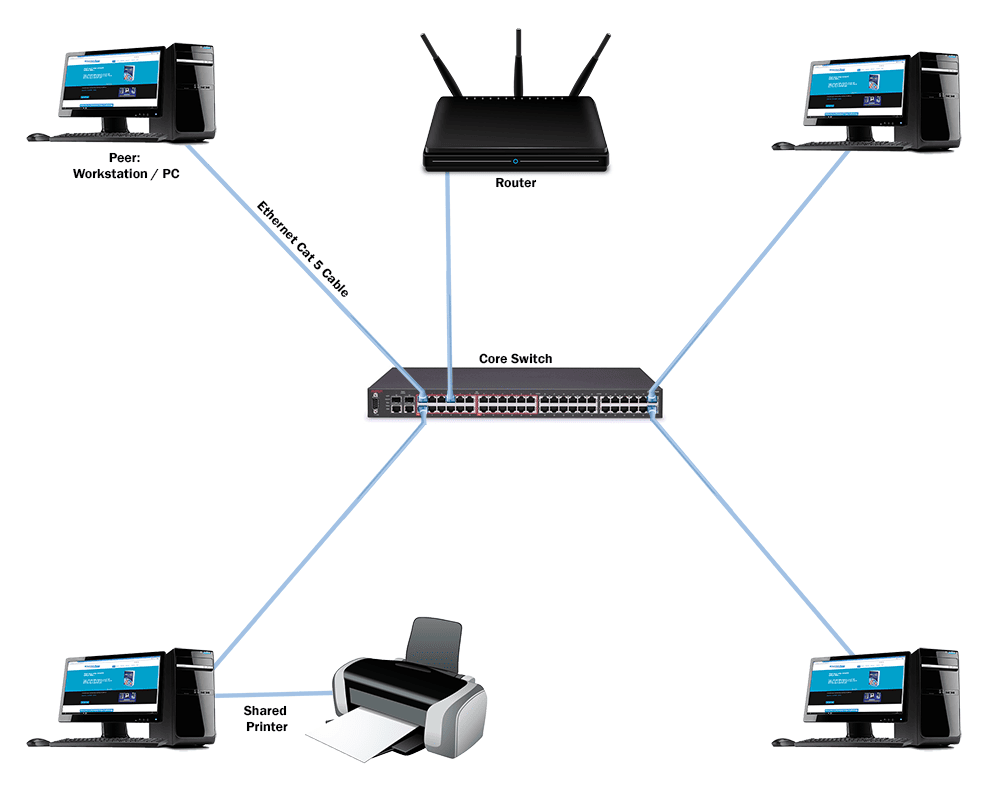A computer network is an interconnected group of computers or devices that facilitate communication and data sharing. This enables devices on the network to share files, printers, and internet access, and also allows users to communicate with each other through various communication protocols, such as Ethernet, Wi-Fi, and the Internet Protocol (IP).

The arrangement of different devices in a network can take various forms, including star, ring, bus, and mesh topologies. Each topology has its own advantages and disadvantages in terms of performance, reliability, and ease of maintenance.
Networks use standardized communication protocols to enable devices to communicate. Common protocols include TCP/IP (Transmission Control Protocol/Internet Protocol), which is the foundation of the internet, as well as HTTP, FTP, and others.
There are also various types of networks. A Local Area Network (LAN) connects devices within a limited geographical area, such as a home, office, or campus. LANs are typically high-speed and are commonly used for sharing resources like printers, files, and internet access among connected devices.
A Metropolitan Area Network (MAN) is a network that covers a larger geographical area, such as a city or a large campus, connecting multiple LANs within that region. MANs are designed to facilitate high-speed communication over a more extensive area than a LAN.
A Wide Area Network (WAN) is a network that spans a broad geographical area, often connecting multiple LANs and MANs. The internet is the largest and most well-known example of a WAN, enabling communication and data exchange across global distances.
A Personal Area Network (PAN) is a small network typically used for connecting personal devices, such as smartphones, tablets, and laptops, often within a range of a few meters. An example of a PAN is Bluetooth, which allows devices to communicate wirelessly over short distances.